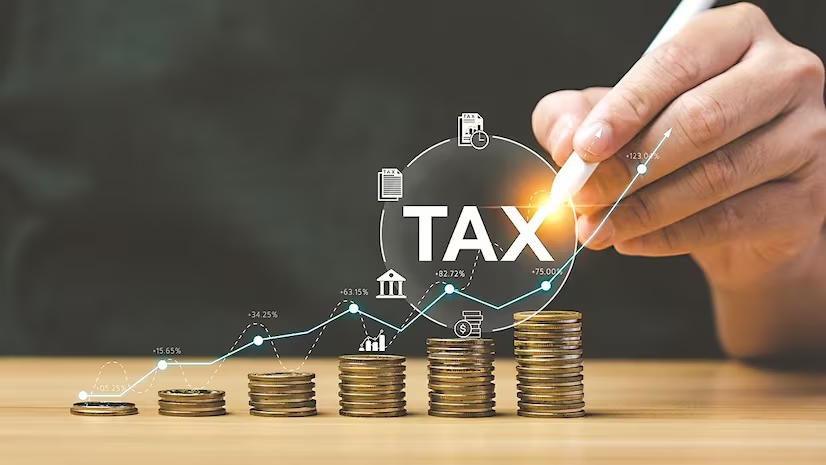- Introduction
- Background and Context
- Detailed Breakdown of Income Tax Slabs for FY 2025-26
- Income Tax Changes: Understanding the New Slabs
- Comparison with Previous Years
- Implications for Taxpayers
- Tax Planning Strategies
- Supporting Data and Statistics
- Unexpected Insight: Focus on Digital Transactions
- Conclusion
- Key Citations
Introduction
This section provides a comprehensive exploration of recent tax trends in India, focusing on the income tax changes for FY 2025-26, supported by data and insights from various sources. The analysis aims to inform taxpayers and tax professionals, ensuring a thorough understanding of the current tax landscape.
Background and Context
India’s tax system has undergone significant reforms, particularly with the introduction of the new tax regime under Section 115BAC, which became the default option from FY 2023-24. The Union Budget 2025, presented by Finance Minister Nirmala Sitharaman, further revised the income tax slabs to offer relief and simplify compliance. These changes are timely, given the robust growth in direct tax collections, which reached Rs. 19.58 lakh crore in FY 2023-24, marking a 17.7% increase year-over-year (India’s Direct Tax Collection: Analyzing Diverging Trends | IBEF).
Detailed Breakdown of Income Tax Slabs for FY 2025-26
Income Tax Changes: Understanding the New Slabs
The new tax regime for FY 2025-26 (AY 2026-27) introduces the following slabs, effective from April 1, 2025:
| Income Range (Rs.) | Tax Rate (%) |
|---|---|
| 0 – 4,00,000 | 0% |
| 4,00,001 – 8,00,000 | 5% |
| 8,00,001 – 12,00,000 | 10% |
| 12,00,001 – 16,00,000 | 15% |
| 16,00,001 – 20,00,000 | 20% |
| 20,00,001 – 24,00,000 | 25% |
| Above 24,00,000 | 30% |
Key highlights include:
- A rebate under Section 87A increased to Rs. 60,000, ensuring no tax liability for income up to Rs. 12,00,000, up from Rs. 7,00,000 previously (Income Tax Slab for FY 2025-26 and FY 2024-25 – New vs Old Tax Regime).
- The standard deduction for salaried individuals has been raised to Rs. 75,000, enhancing tax savings (New Income Tax Slab and Rates – FY 2025-26 (AY 2026-27) | FY 2024-25 (AY 2025-26)).
In contrast, the old tax regime remains unchanged, allowing deductions under sections like 80C, 80D, etc., which may benefit those with significant investments.

Comparison with Previous Years
The shift in tax policy reflects broader trends in India’s tax landscape. Direct tax collections have seen a significant rise, with personal income tax collections at Rs. 10.45 lakh crore in FY 2023-24, surpassing corporate tax collections of Rs. 9.11 lakh crore (Direct tax collections jump 182% in 10 years to more than ₹19.60 lakh crore in FY24 – The Hindu).
This trend, with direct taxes contributing 56.72% to total revenue in FY24, is the highest in 14 years, indicating a growing reliance on personal income tax (Direct taxes bring 57% to total revenue, highest in 14 years | Business News – The Indian Express).
Implications for Taxpayers
The revised slabs are expected to reduce the tax burden for middle and lower-income groups, potentially increasing disposable income. For instance, individuals earning up to Rs. 12,75,000 (including standard deduction) will have zero tax liability under the new regime, a significant relief (Income Tax Slabs 2025: No income tax upto Rs 12 lakhs, check new income tax regime AY 2025-26 here). This change aligns with the government’s focus on formalizing the economy, as seen with GST policies and digital transaction incentives (Addressing the ‘tax gap’ in India – PwC India).
Tax Planning Strategies
To optimize tax savings, taxpayers should:
- Compare tax liability under both regimes using online calculators, such as those provided by ClearTax.
- Leverage deductions in the old regime if eligible, especially for investments in ELSS, PPF, or health insurance.
- Stay updated on compliance deadlines, such as ITR filing, which saw extensions for certain categories in recent years (News & e-Campaigns | Income Tax Department).
Supporting Data and Statistics
Recent data highlights the growth in tax collections:
- Direct tax-to-GDP ratio reached a 20-year high of 6.64% in FY 2023-24, reflecting strong tax buoyancy (Trends in Tax Revenue Collection).
- The number of income tax returns filed increased from 4.04 crore in FY 2014-15 to 8.61 crore in FY 2023-24, indicating broader tax compliance (Direct tax collections jump 182% in 10 years to more than ₹19.60 lakh crore in FY24 – The Hindu).
Unexpected Insight: Focus on Digital Transactions
An interesting trend is the government’s push for a cashless economy, with stricter reporting for cash transactions above Rs. 2 lakh, aiming to curb black money and enhance transparency. This aligns with the tax reforms, potentially increasing digital tax compliance (Income Tax Trends and Demographics in India 2024).
Conclusion
The income tax slab changes for FY 2025-26 reflect India’s evolving tax policy, focusing on relief for the middle class and formalization of the economy. Taxpayers are encouraged to assess their options and consult professionals for personalized advice, ensuring compliance and optimization of tax savings.
Key Citations
- India’s Direct Tax Collection: Analyzing Diverging Trends | IBEF
- Direct tax collections jump 182% in 10 years to more than ₹19.60 lakh crore in FY24 – The Hindu
- Direct taxes bring 57% to total revenue, highest in 14 years | Business News – The Indian Express
- Addressing the ‘tax gap’ in India – PwC India
- Income Tax Slab for FY 2025-26 and FY 2024-25 – New vs Old Tax Regime
- New Income Tax Slab and Rates – FY 2025-26 (AY 2026-27) | FY 2024-25 (AY 2025-26)
- Income Tax Slabs 2025: No income tax upto Rs 12 lakhs, check new income tax regime AY 2025-26 here
- Income Tax Trends and Demographics in India 2024
- Trends in Tax Revenue Collection
- News & e-Campaigns | Income Tax Department
- ClearTax Income Tax Slabs
‘Also See:
-
CA Exam Results : Sep 2025 to be announced on November 3, 2025
The CA Exam Results Sep 2025 is all set to be announced by the ICAI on Nov 3, 2025
-
Compliance Calendar November 2025
Spread the love Post Views: 12 Compliance Calendar November 2025 compiles the compliances for the month of November 2025 as per Income Tax, GST , PF and ESI. Due Date […]
-
Minimum Alternate Tax (MAT) [Section 115JB]
Spread the love Post Views: 23 Introduction Minimum Alternate Tax (MAT) was introduced to ensure that companies pay taxes on their profits as per books of accounts as they report […]
-
MCA Extends Filing Due Date | No Additional Fee Till Dec ’25
MCA announces no additional fees for FY 2024-25 filings. Companies can submit AOC-4 & MGT-7 forms till 31st December 2025 without late fee. Learn details here.
-
December 31 : Target for Notification of New Rules Under Income Tax Act, 2025
The New Rules under Income Tax Act, 2025 are expected to be notified by Dec 31, 2025. Since the forms and utilities would require a major overhaul, the move is expected to bring the necessary respite
-
GST 2.0 Reforms – Simplified tax rates
Spread the love Post Views: 26 Introduction Goods and Service Tax (GST) was introduced on 1st July 2017. From the date of its introduction the Act is being modified for […]
Stay Tuned to TaxRoutine for more income tax changes related updates.

